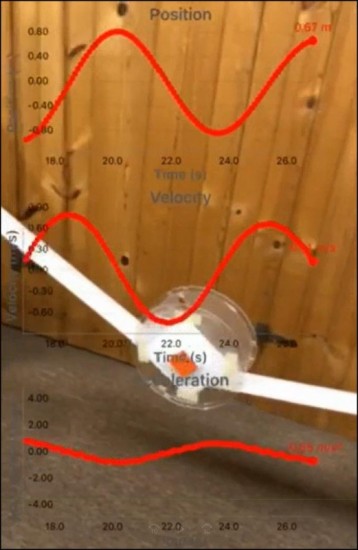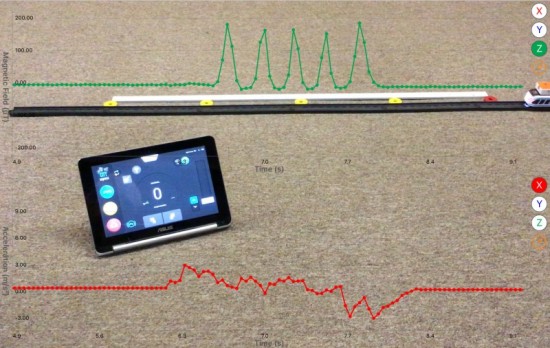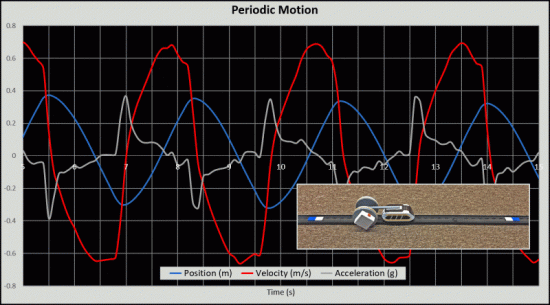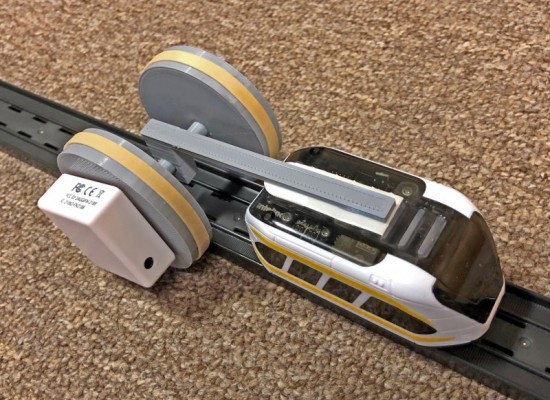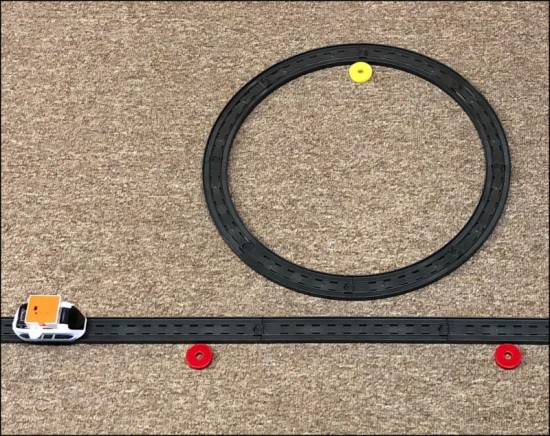You can make experiments the most fun and engaging part of your science class. Experienced educators and curriculum specialists have developed each of these lessons, and we have tested them in real classrooms. PocketLab middle school lessons span across all the Next Generation Science Standard (NGSS) disciplines. Browse all the middle school lessons below or use the filters to search for specific content.
Middle School Science
Polarized Light
Light travels in waves, but unlike waves on the ocean, they are much too small for us to see with the naked eye. A polarizer is a light filter that only allows light waves that are moving in one direction to pass through, letting us indirectly observe some of the wave properties of light. This aligned light that passed through a polarizer is called polarized light.
Periodic Motion of an Empty 3D Filament Reel
Introduction
Don't discard your school's empty 3D filament reels. There's a good chance that you and your students could come up with some interesting physics lab investigations using these reels. Attach Voyager or PocketLab One to the reel and the possibilities are endless! This lesson describes a unique experiment in which periodic motion is investigated using an empty 3D filament reel. Depending on the teacher's goals and amount of detail in the analysis of collected data, this lab could be used from the 4th grade through high school. The
Calibration Lesson: Intelino Smart Train and Voyager
Introduction to Calibration
Sensor-based inquiry is a dominant force in today’s science education, with the calibration of sensors being essential for high-quality measurement. Wikipedia® defines calibration as “the comparison of measurement values delivered by a device under test with those of a calibration standard of known accuracy.” In this lesson students will study the process of calibration in an experiment to determine the speed of the intelino engine as the accelerator is incremented in ten equally spaced steps from zero to full throt
Intelino / Voyager: Angular Velocity vs. Speed in Circular Motion
Introduction
Have you ever felt like you are going in circles? In this lesson you will have PocketLab Voyager going in circles while riding an intelino smart train engine. If you are not familiar with intelino, here is a quick overview. Designed for all ages, intelino is intuitive with its app, has built-in sensors to provide an interactive experience for the user, and is easily programmed with color snaps that allow the user to control intelino's actions. Most elementary and junior high school students enjoy playing with trains. So why not sneak some physic
Intelino / Voyager Lab: "Floor-it" Acceleration/Max Speed
Introduction
The purpose of this lesson is to challenge your students to design an experiment for which data from PocketLab Voyager is used to determine the "floor-it" acceleration and maximum speed of the intelino smart train engine. Required data should be obtained in a single run of data collection by the PocketLab app. Figure 1 shows a picture of Voyager attached to the top of an intelino smart engine. Designed for all ages, intelino is intuitive with its app, has built-in sensors to provide an interactive experience for the user, and is easily programmed with colo
intelino/Voyager: Periodic Motion Lab
Introduction
Periodic motion is motion that repeats itself in regular intervals. If the motion has characteristics that are sinusoidal, then the motion is said to be simple harmonic (SHM). In this lesson, periodic motion that is not simple harmonic is studied. Never-the-less, the motion shows many characteristics of SHM, as can be seen when studying the position, velocity, and acceleration graphs. This lab makes use of PocketLab Voyager that has hitched a ride on an "intelino® smart train" and is running on the VelocityLab app. Int
intelino/Voyager: 7-9 Math/Physical Science Slope Lab
Introduction
Math students are typically introduced to the concept of slope in the 7th grade, learning that slope has to do with steepness. By the 8th grade many learn how to calculate the slope of a line as the rise divided by the run or rise over run. If the rise is positive, then the slope is positive (sloping upward). On the other hand, if the rise is negative, then the slope is negative (sloping downward). If the line is horizontal, then the slope is zero.
What is Ocean Acidification? (K-MS)
Climate change is at the forefront of environmental concerns and it often revolves around carbon dioxide in the atmosphere and its effect on average temperature. However, carbon dioxide is not only increasing in the atmosphere but in the ocean as well. The source of this carbon dioxide is the much talked about atmospheric carbon dioxide, as carbon dioxide is soluble in water.
Pi from Voyager and an Intelino Smart Train
Introduction to Pi
There is probably no number that has received more interest since ancient times that the number pi, symbolized by the Greek letter π. Originally defined as the ratio of the circumference of a circle to its diameter, it has been given approximate values including 3.14 and 22/7. Proven to be an irrational number, supercomputers have computed the value of pi to more than one trillion digits.
intelino / Voyager Lab: Stopping Distance vs. Speed
Introduction
Have you ever been told not to follow too close to the driver ahead of you? To keep a safe distance? To abide by the "3-second rule"? To keep a distance of at least one car length for every ten miles per hour of speed? These questions all deal with the issue of stopping distance versus speed in order to avoid crashes. A great way to investigate the relationship between stopping distance and speed is to interface Voyager with an "intelino® smart train". Designed for all ages, intelino is intuitive with its app, has bui


